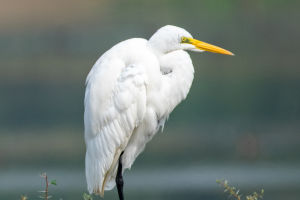Fascinating Insect
Dragonflies are fascinating insects that can be found all over the world except Antarctica. These insects are known for their large, elongated bodies and four long, transparent wings, which allow them to fly with incredible speed and agility.
One of the most distinctive features of dragonflies is their striking colors and patterns. They come in a variety of colors, including blue, green, red, and yellow. These colors can vary from species to species, and even between individuals within the same species. Dragonflies also have large, compound eyes that provide them with excellent vision and allow them to hunt and navigate with ease.
Dragonflies are predatory insects that feed on other insects such as mosquitoes, flies, and butterflies. They are very agile fliers, capable of catching prey while flying at high speed. Their hunting skills are aided by their slender bodies, which allow them to maneuver through the air with ease.
As far as its life cycle is concerned, the life of a dragonfly begins with eggs, which are laid in or near a body of water. Once the eggs hatch, larvae called nymphs live in the water and feed on small aquatic organisms. The nymph grows and molts several times before the adult dragonfly emerges from the water.
Dragonflies are an important part of many ecosystems as they help control insect populations and serve as food for birds, fish, and other predators. They are also important cultural symbols in many cultures around the world, representing strength, agility, and strength.
There are over 5,000 species of dragonflies that have been identified so far, which are divided into several different families. Here are some of the main families of dragonflies:
1. Aeshnidae: These dragonflies are commonly referred to as "hawkers" and are known for their large size and aggressive behavior. They are often found near water, and they prey on other flying insects.
2. Libellulidae: These dragonflies are known as "skimmers" and are found all over the world. They are typically smaller than aeshnids and have a distinctive wing shape that allows them to fly fast and maneuver quickly.
3. Gomphidae: These dragonflies have distinctive club-like tails and are known as "clubtails." They are found near streams and rivers and are often brightly colored.
4. Corduliidae: These dragonflies are known as "emeralds" because of their bright green coloration. They are often found in wooded areas near streams and rivers.
5. Macromiidae: These dragonflies are known as "cruisers" because they are often seen flying in straight lines over water. They are larger than most other dragonflies and have a distinctive elongated shape.
6. Petaluridae: These dragonflies are also known as "trogons" and are found primarily in tropical regions. They have a distinctive long abdomen and are often brightly colored.
These are just a few examples of the many different types of dragonflies that exist. Each species has its own unique characteristics, including size, coloration, and behavior.
Here are some interesting facts about dragonflies:
1. Dragonflies are ancient insects that have been around for over 300 million years. They are older than dinosaurs!
2. Dragonflies have large, compound eyes that allow them to see in almost all directions at the same time. This gives them a 360-degree view of their surroundings.
3. Dragonflies are incredibly fast and agile fliers. Some species can fly at speeds of up to 60 miles per hour, making them one of the fastest insects in the world.
4. Dragonflies are predators and feed on other insects, such as mosquitoes, flies, and butterflies. They can catch their prey while flying and will eat it on the wing.
5. Dragonflies are an important part of many ecosystems as they help control insect populations and serve as food for birds, fish, and other predators.
6. Dragonflies are not harmful to humans and do not sting or bite. In fact, they are considered beneficial insects because they help control the mosquito population.
7. Dragonflies have a unique mating behavior that involves flying in tandem while the male transfers sperm to the female. This can last for several minutes or even hours.
8. Dragonflies can see polarized light, which helps them navigate and find prey even in low light conditions.
9. Dragonflies are capable of flying backward, which is a rare ability in the insect world.
10. Dragonflies are sensitive to changes in their environment and are often used as indicators of water quality.


